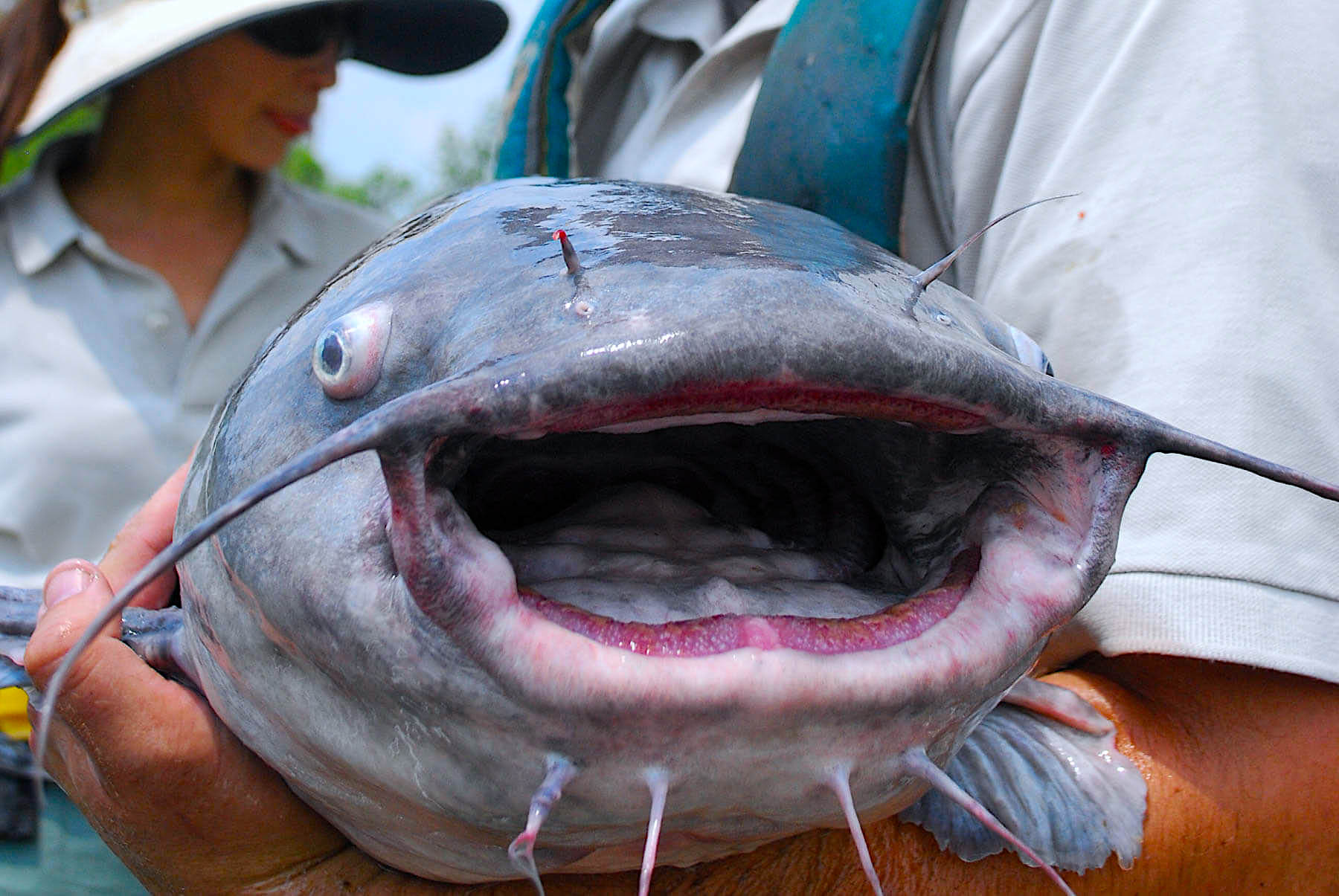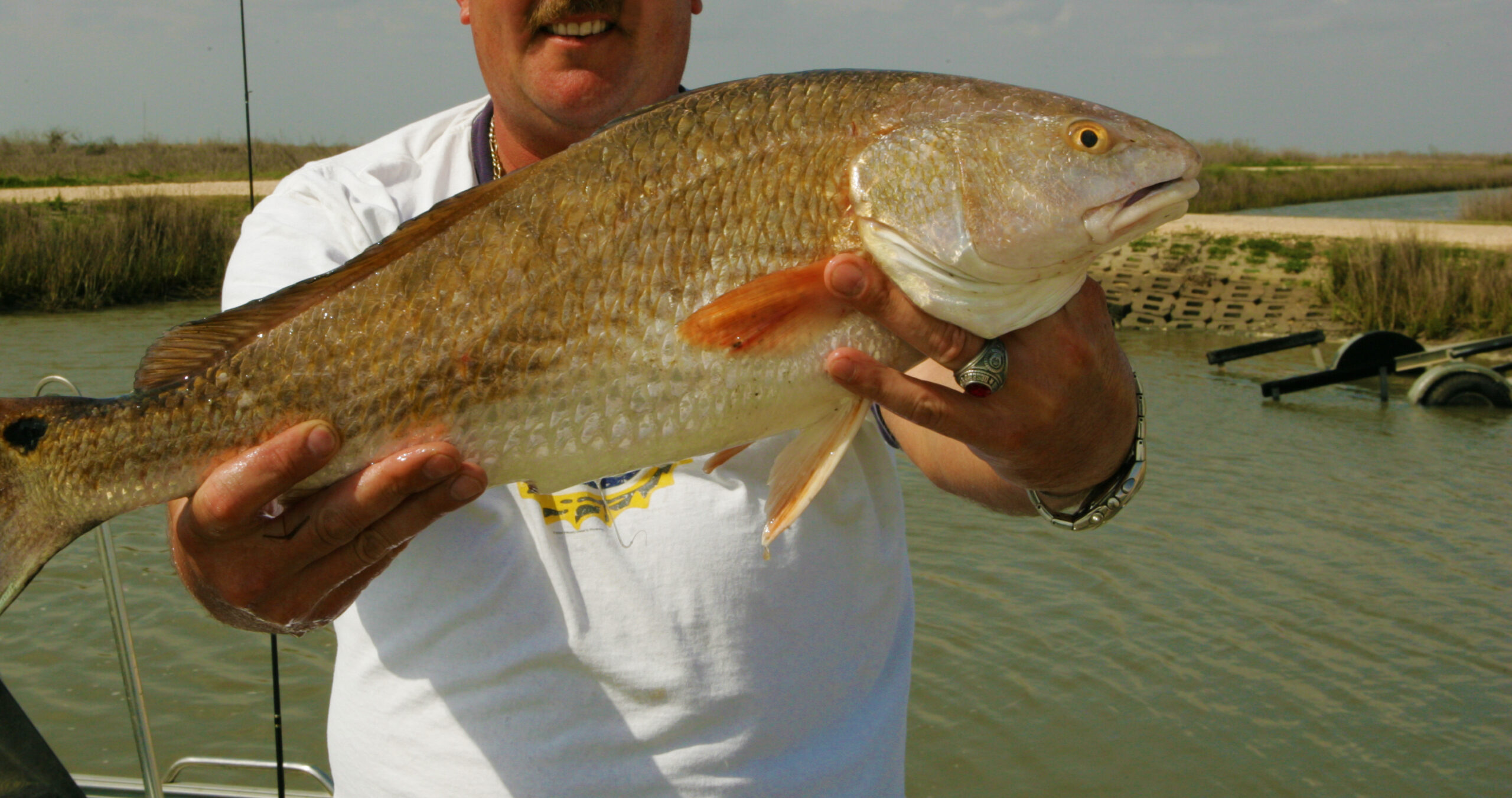Researchers surveyed seafood processors and consumers to gauge demand at the dinner table for this harmful species.
Research Need
The blue catfish is a large-growing and highly reproductive species native to the Mississippi, Missouri, Ohio, and Rio Grande river systems. After they were introduced to several Mid-Atlantic river systems in the 1970s and 1980s to increase sportfishing opportunities, the species quickly increased in numbers, expanding throughout the Chesapeake Bay and other riverine and estuarine systems in the Southeast, including North Carolina.
The proliferation of the species has been rapid, and, as of 2011, the Atlantic States Marine Fisheries Commission and NOAA Fisheries have considered blue catfish an invasive species in the Chesapeake Bay, in part for their ability to outcompete native species.
In theory, it seems like an easy way to reduce the impacts of an invasive species would simply be to eat them, a technique known as “invasivorism.” This is currently popular with lionfish, another invasive species to U.S. waters.
But invasivorism requires consumers to desire that species. Otherwise, market forces will dictate that commercial fishers will simply target the more desirable (and valuable) fisheries.
If more consumers are aware of — and show a preference for — blue catfish, does that mean the fishery could expand, thus reducing the negative impact of the species? Will consumers be willing to pay the same for blue catfish as they might for other similar species?
Given that the species is relatively new to the region, researchers set out to better understand consumer preferences for blue catfish, including choice experiments to determine possible price points that consumers would be most willing to pay.
What did they study?
In 2022, researchers surveyed six existing catfish processors and 1,010 seafood consumers in the Mid-Atlantic and Southeast to understand factors that influence demand for blue catfish.
The consumer survey included choice experiments asking consumers to choose between blue catfish and other comparable seafood products, with and without additional information. The research team targeted seafood consumers that already consumed farm-raised or wild-caught catfish at least once in the previous month.
What did they find?
Consumers were willing to pay $9.70 per pound on average for blue catfish, which was similar to channel catfish ($8.80), but less than flounder ($14.60), tilapia ($13.90), and red snapper ($13.20). Interestingly, consumers were willing to pay up to $22.00 per pound for blue catfish when presented with more information about the invasive species.
Catfish processors noted that increasing processing capacity might be cost-feasible if consumer awareness and demand for blue catfish increased.
About one-third of consumers had previously consumed wild-caught blue catfish, and another one-third indicated a willingness to try it.
In general, consumers provided generally neutral statements about blue catfish. The choice experiments revealed that providing information on production method and product origin increased consumer demand across all seafood products.
For blue catfish, specifically, consumer demand increased when researchers provided consumers with more general information about the species or its harmful ecological effects.
Anything Else?
Expansion of the commercial fishery, which generally targets smaller fish, may be at odds with the interests of recreational fishery, which values the largest blue catfish as a trophy fish. Implementing a management approach where both recreational and commercial sectors are happy could be challenging.
So What?
The consumer survey results suggest that a large and potentially underdeveloped market exists for wild-caught blue catfish in the Mid-Atlantic and Southeast. The authors suggest that other markets inside and outside the U.S. also should be considered and explored.
Reading
Scheld, Andrew M., W. Reid Calhoun, Caela B. Gilsinan, and Shelby B. White. “Market development for an invasive fish species: Blue catfish in the Chesapeake Bay, US.” Fisheries Research. 278 (2024). https://doi.org/10.1016/j.fishres.2024.107099
BY SCOTT BAKER
The text from Hook, Line & Science is available to reprint and republish at no cost, but only in its entirety and with this attribution: Hook, Line & Science, courtesy of Scott Baker and Sara Mirabilio, North Carolina Sea Grant.

- Categories:




